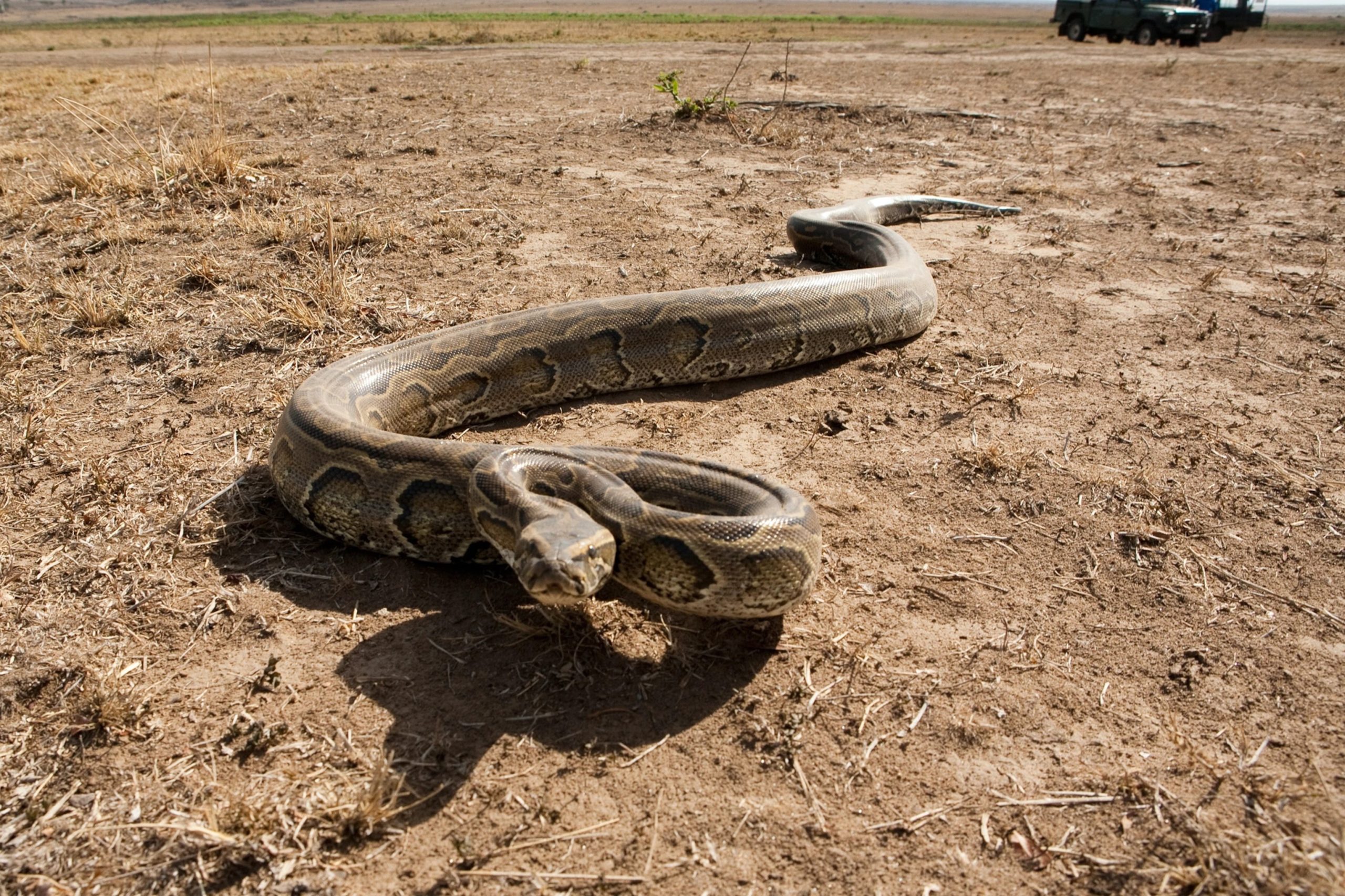The African Rock Python: Majesty in the Wild
Facts; The African Rock Python (Python sebae), renowned for its impressive size and striking appearance, is one of the largest snake species in the world. This non-venomous constrictor is native to sub-Saharan Africa and can be found in a variety of habitats, showcasing its adaptability to diverse ecosystems.
Physical Characteristics:
Size: African Rock Pythons are among the largest snake species, with adults commonly reaching lengths of 16 to 20 feet (4.9 to 6.1 meters). There have been reports of individuals exceeding 20 feet, making them formidable predators in their habitats.
Coloration and Pattern: The python’s coloration and pattern vary, adapting to its environment. Generally, they have a striking pattern of brown, olive, and yellow blotches on a lighter background. The head often has an arrow-shaped marking.
Body Structure: These pythons have a robust body, a broad head, and heat-sensitive pits on their upper lip that aid in locating warm-blooded prey.
Head and Senses: The snake possesses a triangular-shaped head with heat-sensing pits located between the nostrils and eyes. These pits enable the python to detect infrared radiation emitted by warm-blooded prey, aiding in hunting. Their eyes, while lacking eyelids, are protected by transparent scales.
Habitat: – The African Rock Python – Facts
Habitat: African Rock Pythons are highly adaptable and can thrive in various habitats, including grasslands, savannas, forests, and near water bodies. They are often found near areas with abundant prey.
Geographical Distribution: The species has a wide distribution across sub-Saharan Africa, encompassing countries such as Nigeria, Senegal, Uganda, and South Sudan. They inhabit a range of environments, from rainforests to arid regions.
Behavior and Diet:
Nocturnal Behavior: African Rock Pythons are primarily nocturnal, hunting and moving during the night. During the day, they seek refuge in burrows, hollow logs, or under rocks.
Ambush Predators: These pythons are ambush predators, lying in wait for prey to approach. They have a diverse diet, feeding on mammals, birds, and sometimes large reptiles.
Constriction: African Rock Pythons use constriction to subdue their prey. After striking, they coil around the victim and tighten their grip, causing suffocation.
Gestation Period and Reproduction: – The African Rock Python – Facts
The reproductive habits of the African Rock Python involve a combination of courtship rituals and live birth. Mating typically occurs during the rainy season when food is more abundant. After successful copulation, the female undergoes a gestation period lasting approximately 90 to 100 days. The female then gives birth to a large number of live offspring, which can range from 20 to 100 or more. The young pythons are independent from birth and are left to fend for themselves.
Lifespan: – The African Rock Python – Facts
The lifespan of the African Rock Python varies in the wild, with estimates ranging from 20 to 30 years. Factors such as habitat, availability of prey, and human interaction can influence their longevity. In captivity, where they are sometimes kept as exotic pets, they may live even longer under optimal conditions.
Conservation Status: – The African Rock Python – Facts
While not currently classified as endangered, the African Rock Python faces threats from habitat loss, hunting for its skin and meat, and, unfortunately, the pet trade. Conservation efforts are crucial to ensure the continued survival of this majestic species, emphasizing habitat protection and sustainable management practices.
Conclusion/Remarks: – The African Rock Python – Facts
The African RockPython, with its awe-inspiring size and adaptability, plays a vital role in maintaining ecological balance in the diverse landscapes it inhabits. As we celebrate the beauty and significance of this incredible species on its own terms, it is paramount that we continue to foster conservation initiatives to protect its natural habitats and ensure a harmonious coexistence between humans and these remarkable creatures.








